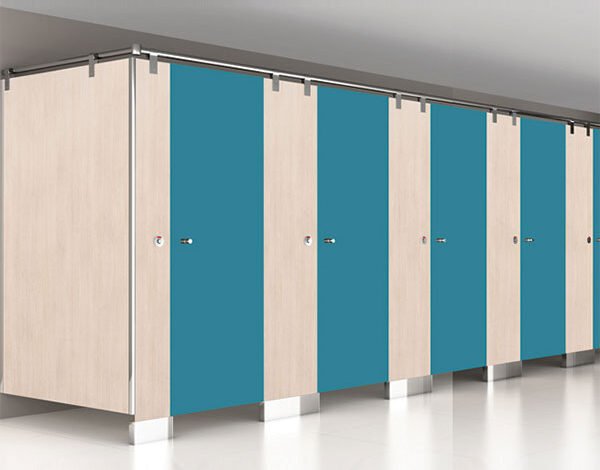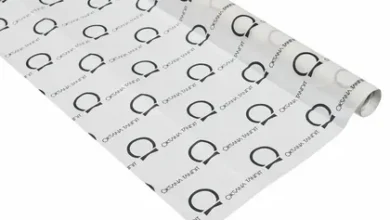
Toilet cubicles might not always be the focal point of a building’s design, but they play a crucial role in functionality and user experience. For manufacturers, understanding the nuances of toilet cubicle design and installation is essential for delivering high-quality products that meet market demands. In this comprehensive guide, we’ll explore the key aspects of toilet cubicle manufacturers, from design considerations to material choices, to help manufacturers create top-notch solutions that stand out in a competitive market.
Understanding the Basics of Toilet Cubicles
Toilet cubicles are partitioned areas within restrooms that provide privacy for users. They come in various configurations, including standard, disabled-friendly, and VIP cubicles. Each type has specific requirements and design considerations, making it essential for manufacturers to cater to diverse needs.
Standard Cubicles: These are the most common and are typically used in public restrooms. They come in various sizes and designs, often featuring floor-mounted or ceiling-hung options.
Disabled-Friendly Cubicles: Designed to accommodate individuals with disabilities, these cubicles need to comply with accessibility standards. They should be spacious, with features like grab rails and easy-to-use door mechanisms.
VIP Cubicles: These offer enhanced privacy and comfort, often found in high-end facilities. They may include additional features such as luxury finishes, larger dimensions, and premium fixtures.
Key Design Considerations
When manufacturing toilet cubicles, several design considerations are crucial:
Privacy: Privacy is the primary function of a toilet cubicle. The design should ensure that users feel secure and unobtrusive. This involves not only the physical layout but also the choice of materials and the height of the partitions.
Durability: Toilet cubicles need to withstand frequent use and varying environmental conditions. Durable materials like laminate, phenolic resin, and stainless steel are commonly used to ensure longevity and easy maintenance.
Aesthetics: While functionality is paramount, aesthetics also play a significant role. Manufacturers should offer a range of styles and finishes that align with modern design trends and the specific needs of the facility.
Accessibility: For public buildings and facilities, accessibility is a critical factor. Designing cubicles that comply with accessibility standards ensures inclusivity and meets legal requirements.
Material Choices for Toilet Cubicles
The choice of material is fundamental to the performance and appearance of toilet cubicles. Here are some popular options:
Laminate: Laminate cubicles are cost-effective and come in a wide variety of colors and finishes. They are easy to clean and maintain, making them suitable for high-traffic areas.
Phenolic Resin: Known for its durability and resistance to moisture, phenolic resin is a popular choice for cubicles in areas prone to high humidity. It is also resistant to scratches and impacts.
Stainless Steel: Stainless steel cubicles offer a sleek, modern appearance and are highly durable. They are ideal for environments where hygiene is a top priority, as they are easy to clean and resistant to corrosion.
Wood Veneer: For a more upscale look, wood veneer cubicles provide a natural, warm aesthetic. However, they require more maintenance and are less suited for high-moisture environments.
Installation and Maintenance
Installation: Proper installation is critical to the performance and longevity of toilet cubicles. Manufacturers should provide clear guidelines and support for the installation process, including detailed instructions and necessary hardware.
Maintenance: Easy maintenance is a key feature of high-quality cubicles. Manufacturers should design products that are not only durable but also easy to clean and maintain. Offering maintenance guides and support can enhance customer satisfaction.
Compliance and Standards
Toilet cubicle manufacturers must be aware of various standards and regulations that apply to their products. These include:
Building Codes: Ensure that cubicles comply with local building codes and regulations, which may include requirements for size, accessibility, and safety features.
Accessibility Standards: Adherence to standards like the Americans with Disabilities Act (ADA) in the U.S. or similar regulations in other countries ensures that cubicles are accessible to individuals with disabilities.
Environmental Regulations: Consider environmental impact by using sustainable materials and practices. Many regions have regulations regarding the environmental footprint of construction materials.
Innovations and Trends
Smart Technology: The integration of smart technology into toilet cubicles, such as touchless controls and occupancy sensors, is becoming increasingly popular. Manufacturers should stay updated on these trends to offer modern solutions.
Sustainable Materials: There is a growing demand for eco-friendly materials in construction. Manufacturers can differentiate themselves by using recycled or sustainably sourced materials in their products.
Customizable Solutions: Offering customizable cubicles that cater to specific needs and preferences can give manufacturers a competitive edge. This includes options for different sizes, finishes, and features.
Compliance and Standards
Toilet cubicle manufacturers must adhere to various standards and regulations:
Building Codes: Ensure that cubicles comply with local building codes, which may include specifications for dimensions, safety features, and installation methods.
Accessibility Standards: Compliance with standards such as the Americans with Disabilities Act (ADA) or similar regulations in other regions ensures that cubicles are accessible to all users.
Environmental Regulations: Consider environmental regulations regarding material usage and waste management. Using sustainable materials and practices can enhance your brand’s reputation and appeal to eco-conscious clients.
Innovations and Trends
Modular Systems: Modular cubicle systems offer flexibility and ease of installation. They can be easily reconfigured or expanded, making them a popular choice for changing spaces.
Smart Technology: Integration of smart features, such as occupancy sensors and touchless controls, is becoming increasingly common. These technologies enhance user convenience and hygiene.
Eco-Friendly Solutions: There is a growing demand for environmentally friendly products. Manufacturers can differentiate themselves by offering cubicles made from recycled or sustainable materials.
Customizable Options: Providing customizable cubicles that cater to specific client needs can set your products apart. This includes offering a range of sizes, finishes, and design elements.
Marketing and Customer Engagement
Market Research: Conducting thorough market research helps identify trends, customer preferences, and competitive dynamics. This information can guide product development and marketing strategies.
Branding: Developing a strong brand identity and emphasizing your unique selling points can help you stand out in a competitive market. Highlighting quality, durability, and innovative features can attract potential clients.
Customer Support: Excellent customer support is crucial for building long-term relationships. Providing responsive service, clear communication, and effective solutions to any issues can enhance customer satisfaction.
Online Presence: An engaging online presence, including a well-designed website and active social media channels, can boost visibility and attract potential clients. Sharing case studies, client testimonials, and product information can showcase your expertise and build trust.


